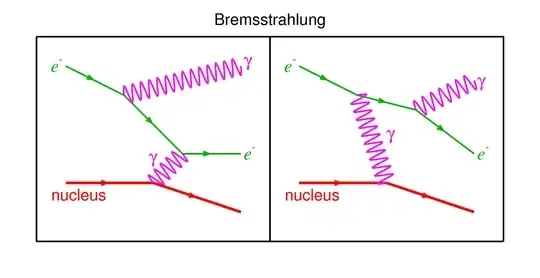In our electrodynamics course we have learned that accelerating a charged particle will lead to a loss of energy in the particle due to Bremsstrahlung. The exact amount of power radiated away is given by the Larmor formula.
However, in a particle physics course I have learned that the following Feynman diagram is not possible without the presence of a nucleus.

Hence my question: How does Bremsstrahlung, which is apparently a problem at large circular particle accelerators, even occur?
For example in the LHC the beam pipe vacuum seems to be around 10^-8 to 10^-9 Pa (LHC Vacuum ). According to this table, a vacuum that empty corresponds to a mean free path of around 1000km. While this might be enough collisions for the accelerated protons to fire a photon every once in a while, it is definitely not what I imagined the Bremsstrahlung in the LHC to be - namely a continuous loss of energy during the acceleration. Does that mean, that the Bremsstrahlung-issue could be completely resolved by creating an even better vacuum?